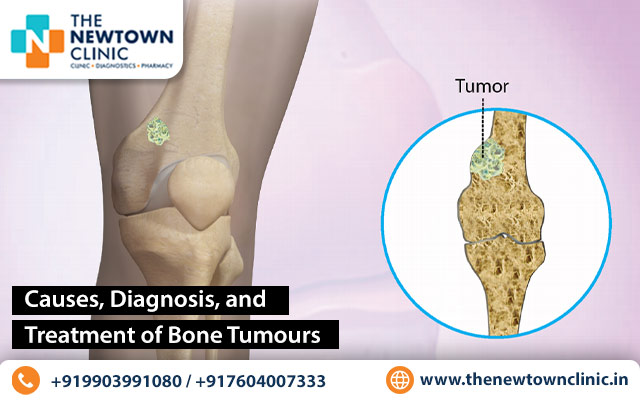Bone tumors refer to abnormal growth of cells within the bone that can be noncancerous (benign) or cancerous (malignant). Knowing the causes, diagnosis, and treatments for bone tumors is crucial for proper management and patient care. Read to learn them from the best orthopedic doctor in Newtown.
Causes
The exact cause of bone tumors is often unknown. However, factors such as genetic mutations, radiation exposure, hereditary conditions (e.g., multiple osteochondromas, Paget’s disease), and history of previous cancer treatments may increase the risk of developing bone tumors, says the best orthopedic surgeon in Saltlake.
Diagnosis
The diagnosis of bone tumors involves a comprehensive evaluation and various diagnostic techniques. Medical history, imaging tests, like X-rays, CT scans, MRI scans, and physical examinations help in determining the characteristics of bone tumors. Additionally, a biopsy is performed to analyze a sample of the tumor tissue for a definitive diagnosis.
Types of Bone Tumors
Bone tumors can be categorized into two main types: benign and malignant. Benign bone tumors, such as osteochondroma, osteoid osteoma, and enchondroma, are noncancerous and usually have a good prognosis. Malignant bone tumors, including osteosarcoma, Ewing sarcoma, and chondrosarcoma, are cancerous and require prompt treatment due to their aggressive nature.
Treatments
The best orthopedic doctors in Newtown offer the following treatments for benign bone tumors.
- Observation and monitoring: Some benign bone tumors, such as osteoid osteoma, may not require any treatment and can be monitored to ensure they do not cause any complications.
- Pain management: If the tumor is causing pain or discomfort, pain medications or anti-inflammatory drugs may be prescribed to alleviate the symptoms.
- Radiofrequency ablation: This minimally invasive procedure involves using heat to destroy the tumor tissue. It is often used for small osteoid osteomas.
- Cryoablation: Similar to radiofrequency ablation, cryoablation uses extreme cold to freeze and destroy the tumor.
- Curettage and bone grafting: For larger benign bone tumors, curettage may be performed. This involves removing the tumor and filling the resulting void with a bone graft to promote healing and stability.
For cancerous bone tumours, doctors might suggest other treatments such as surgery, chemotherapy, or radiation therapy.
It is important to consult with the best orthopedic doctor in Newtown to determine the most appropriate treatment approach based on the specific type and stage of the bone tumor.







